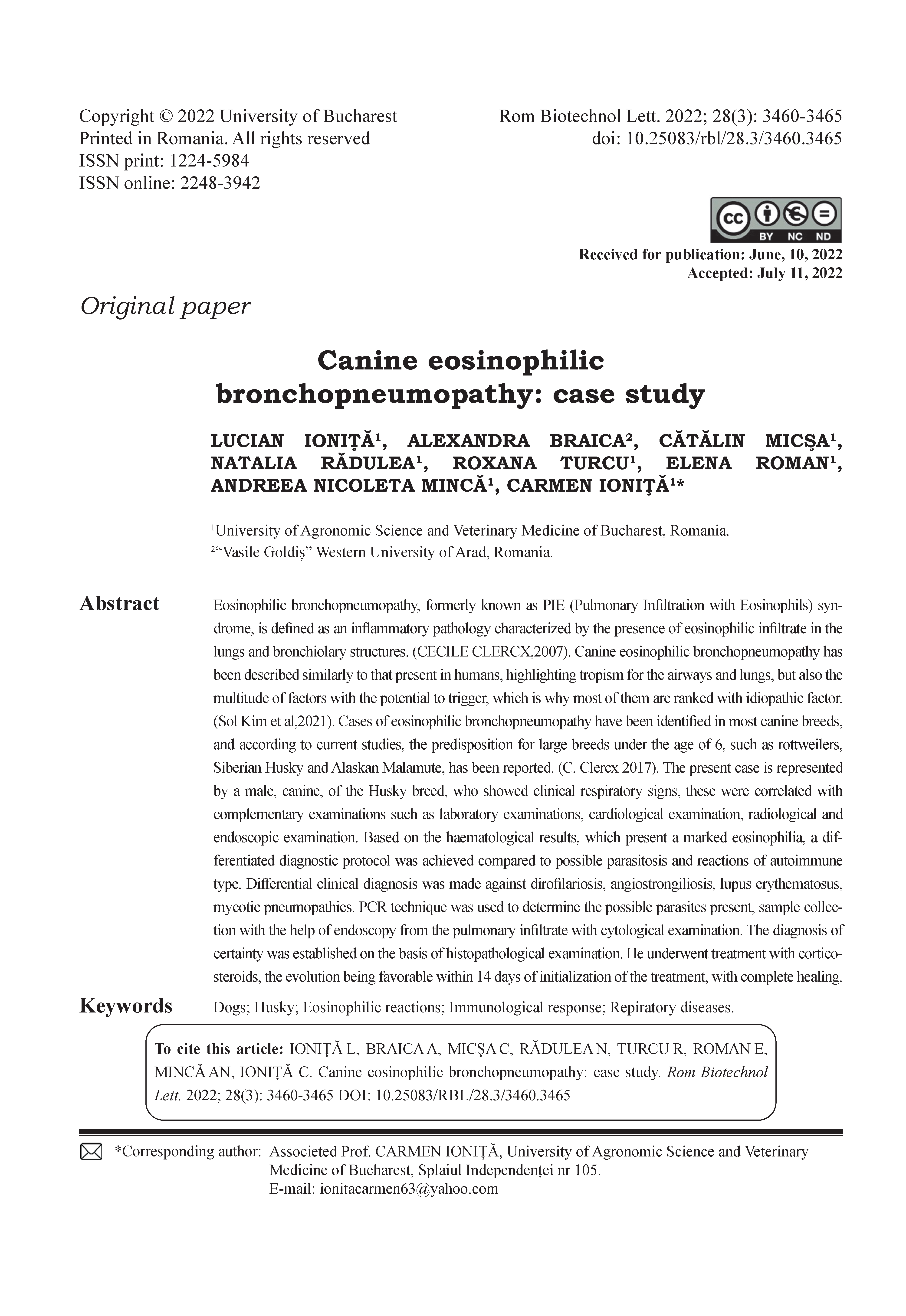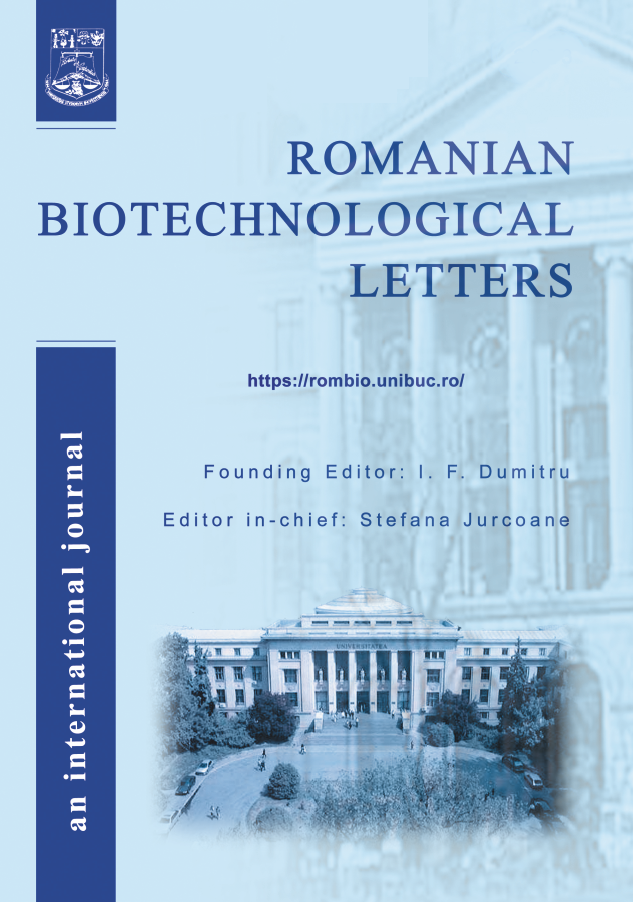Canine eosinophilic bronchopneumopathy: case study
DOI:
https://doi.org/10.25083/rbl/28.3/3460.3465Cuvinte cheie:
dogs, eosinophilic reactions, immunological response, respiratory diseasesRezumat
Eosinophilic bronchopneumopathy, formerly known as PIE (Pulmonary Infiltration with Eosinophils) syndrome, is defined as an inflammatory pathology haracterized by the presence of eosinophilic infiltrate in the lungs and bronchiolary structures. (CECILE CLERCX,2007). Canine eosinophilic bronchopneumopathy has been described similarly to that present in humans, highlighting tropism for the airways and lungs, but also the multitude of factors with the potential to trigger, which is why most of them are ranked with idiopathic factor. (Sol Kim et a1,2021). Cases of eosinophilic bronchopneumopathy have been identified in most canine breeds, and according to current studies, the predisposition for large breeds under the age of 6, such as rottweilers, Siberian Husky and Alaskan Malamute, has been reported. (C. Clercx 2017). The present case is represented by a male, canine, of the Husky breed, who showed clinical respiratory signs, these were correlated with complementary examinations such as laboratory examinations, cardiological examination, radiological and endoscopic examination. Based on the haematological results, which present a marked eosinophilia, a differentiated diagnostic protocol was achieved compared to possible parasitosis and reactions of autoimmune type. Differential clinical diagnosis was made against dirofilariosis, angiostrongiliosis, lupus erythematosus, mycotic pneumopathies. PCR technique was used to determine the possible parasites present, sample collection with the help of endoscopy from the pulmonary infiltrate with cytological examination. The diagnosis of certainty was established on the basis of histopathological examination. He underwent treatment with corticosteroids, the evolution being favorable within 14 days of initialization of the treatment, with complete healing.




